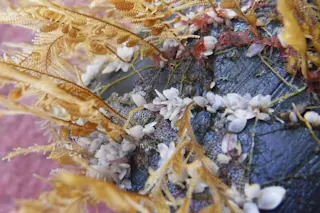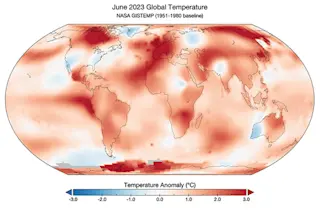The evolution of minerals on our planet has been propelled by the evolution of life on earth, a sweeping new study demonstrates. While the underlying assumption isn't new, the study is the first to chart how the emergence of algae and then complex microorganisms gave rise to the 4,300 or so minerals that are now present on earth. In the early days of the universe, clouds of gas and dust contained all the naturally occurring elements found in the periodic table, but most were too widely dispersed to form minerals; scientists believe there were only about
a dozen minerals in the interstellar medium. According to the study, around a further 60 different minerals formed 4.5 billion years ago, as clumps of matter collided and coalesced to begin forming the Solar System. The smaller fragments congealed into larger, planet-sized bodies, where volcanism and the effects of water took the mineral count ...













